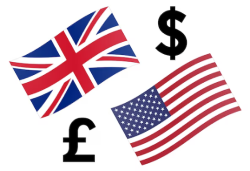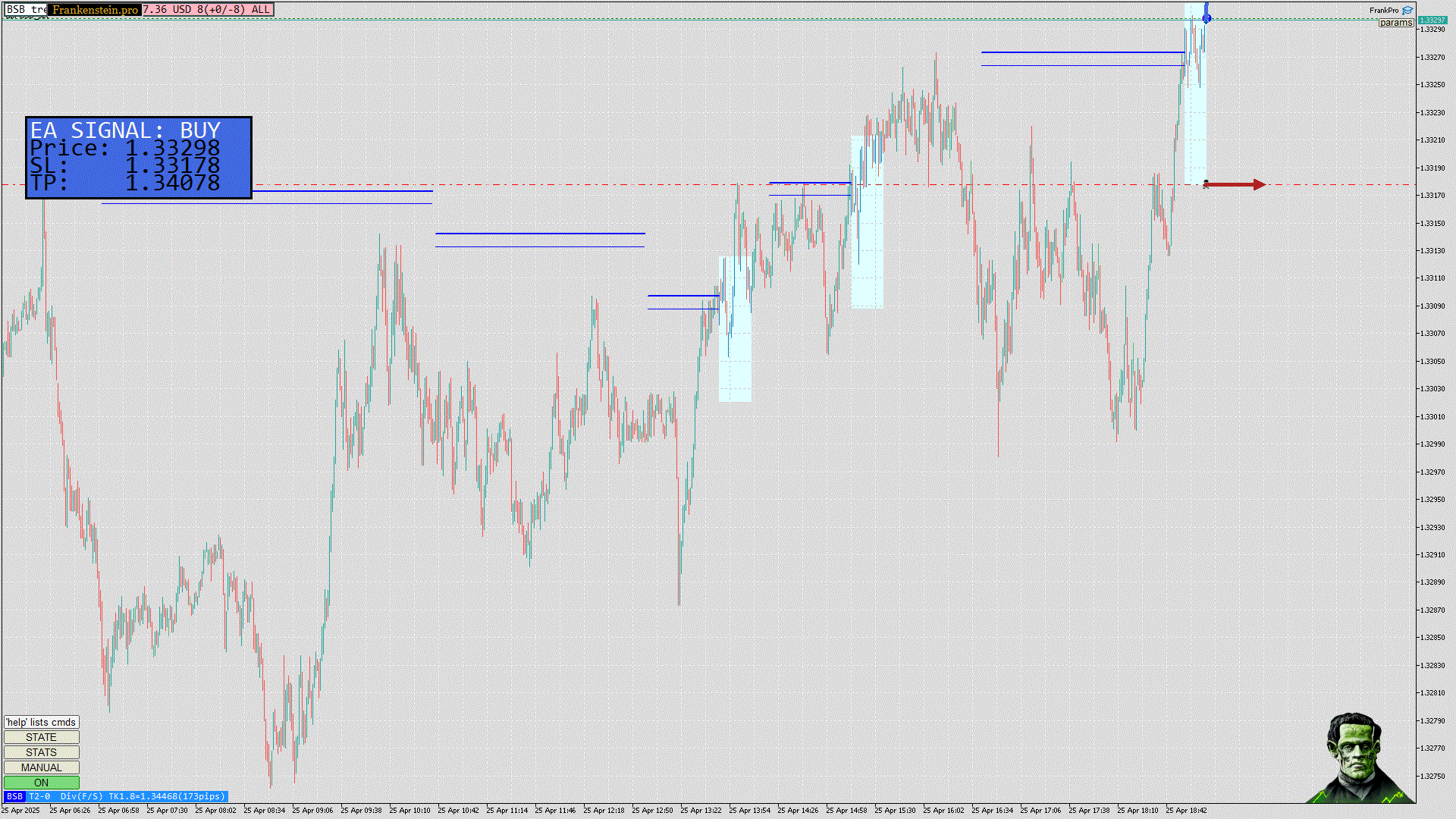FrankPro Signal for GBPUSD_520
Type: Screen
Signal: BUY
TP: 1.34078
SL: 1.33178
Entry Price: 1.33298

Flexity Analysis for GBPUSD
Forecast Overall(Short-Term, Long-Term): ST=Undecided LT=Probably Up
Forecast Methods(Short-Term, Long-Term):
[Method0] ST=Same LT=Up
[Method1] ST=Down LT=Down
[Method2] ST=Up LT=Up
FlexityIndicator Analysis Method(0)
Short-Term: NO DATA Long-Term: Based on the analysis of the provided information, the GBP/USD currency pair is expected to **go up** in the long term. This conclusion is supported by positive technical indicators, an upgrade to a "Buy candidate" status, and a projected price increase over the next three months.
Result: [Method0] ST=Same LT=Up
FlexityIndicator Analysis Method(1)
Short-Term: **Analysis of GBP/USD Short-Term Outlook:** Based on the comprehensive analysis of market forecasts, price targets, and expert opinions, the GBP/USD currency pair is expected to experience a downward trend in the short term. Key factors contributing to this outlook include: 1. **Dollar Strength:** The US dollar's rally, driven by de-escalation between Russia and Ukraine, has strengthened the USD, negatively impacting GBP/USD. 2. **Weak UK PMI Data:** Concerns over the UK's economic growth have led to pound volatility, adding downward pressure on GBP/USD. 3. **Expert Predictions:** Major financial institutions such as HSBC, ING Bank, and Citibank highlight factors like dollar strength, UK economic weaknesses, and political instability, all pointing towards potential depreciation of GBP against USD. 4. **Market News and Economic Indicators:** Mixed PMI readings and upcoming significant events (BOE meeting, US inflation data) introduce uncertainty but lean towards a weaker pound. In conclusion, despite a forecast of flat performance on 24th April, the stronger influence from the preceding day's retreat and ongoing market dynamics suggest a downward trend for GBP/USD in the short term. **Final Answer:** The price for GBP/USD is expected to go down. Long-Term: The analysis of the provided context indicates a consistently bearish outlook for GBPUSD across multiple sources. Here's the breakdown: 1. **Trading Forecasts**: - **HSBC**: Bearish due to trade tensions and policy uncertainty, expecting further weakening of GBP. - **Standard Chartered**: Predicts a gradual decline over 12-18 months, citing UK economic challenges and US Fed tightening. - **Citi**: Anticipates moderate decline due to monetary policy divergence, with risks towards depreciation. - **Deutsche Bank**: Warns of a bearish outlook, suggesting potential downside beyond 1.20. 2. **Price Predictions**: - All predict a decline in GBPUSD, with targets below 1.20 in the long term. 3. **Market News**: - Highlights economic uncertainties in the UK, policy divergence, and geopolitical factors affecting GBPUSD volatility. **Conclusion**: The long-term outlook for GBPUSD is bearish, with all forecasts indicating a downward trend due to various economic and geopolitical factors. Answer: The price for GBPUSD is expected to go down in the long term.
Result: [Method1] ST=Down LT=Down
FlexityIndicator Analysis Method(2)
Short-Term: **Answer:** Based on the analysis of the provided information, the short-term outlook for GBP/USD is expected to go up. This conclusion is drawn from several factors: 1. **Dollar Weakness:** The decline in USD/JPY suggests a broader weakening trend of the dollar, which could lead other currencies, including GBP, to strengthen against it. 2. **Risk Sentiment and Market Movements:** Both EUR/USD and GBP/USD have shown minor increases, indicating a potential shift towards riskier assets and stronger currencies, particularly if risk sentiment improves. 3. **Trade War Uncertainty:** If the trade war continues without progress, risk aversion in markets could further strengthen the pound as investors seek safer haven currencies or alternative strengths. 4. **US Economic Health:** Supply chain issues, indicated by reduced trucking volumes, may impact the US economy, potentially weakening the dollar and thereby strengthening GBP/USD. While there is a caveat that de-escalation in trade tensions could reverse this trend, the current momentum leans towards the pound gaining strength against the dollar in the short term. Long-Term: **Analysis of GBP/USD Long-Term Outlook:** The long-term trajectory of the GBP/USD exchange rate is influenced by several key factors: 1. **Trade War Developments:** Ongoing tensions between the U.S. and China could impact global economic growth, potentially leading investors to seek safe-haven currencies like GBP. If trade issues persist or escalate, this might strengthen GBP against USD. 2. **Economic Policies:** The monetary policies of the Bank of England and the Federal Reserve, particularly interest rate adjustments, will play a crucial role. A divergence in policy stances (e.g., the U.S. cutting rates while the UK raises them) could lead to GBP appreciation. 3. **Geopolitical Events:** Global instability or economic events could shift market sentiment, affecting currency values and potentially strengthening GBP as a safe haven. 4. **Market Sentiment:** Investor risk appetite will influence whether they move towards safer assets like GBP or back into USD. **Conclusion:** While the short-term outlook suggests a rally for GBP due to trade war concerns, the long-term picture is less certain but leans toward potential appreciation of GBP if trade tensions continue and central banks in the UK adopt a hawkish stance. However, without definitive data, this remains speculative.
Result: [Method2] ST=Up LT=Up

